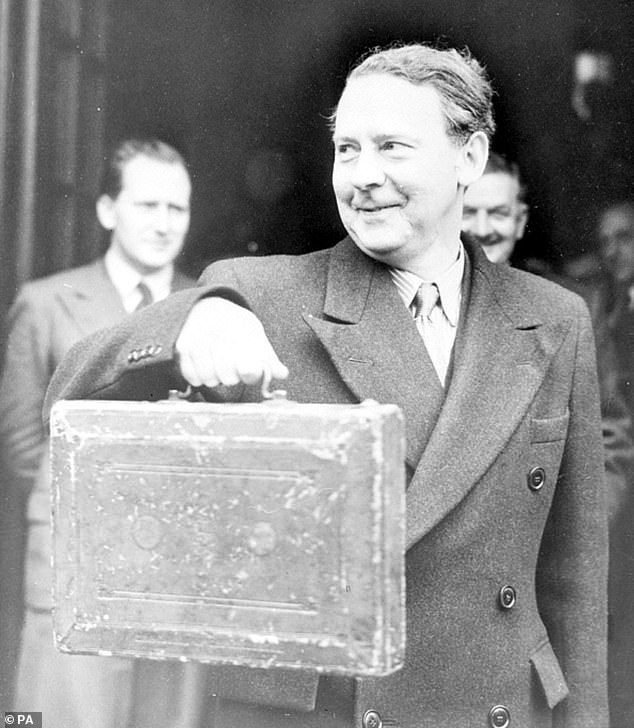The past often looms larger than the present as one grows older. So I was grateful to receive a letter from a loyal reader who found a newspaper cutting revealing the contents of the 1951-52 Budget.
At the time I was still in my Silver Cross pram blissfully unaware of the privations of the nation.
But as a financial journalist who has reported on Budgets since the mid-1970s, the news was depressingly familiar. It dated to the final days of the post-War Government. The occupant of No 11 seeking to balance the nation’s books was Hugh Gaitskell. Hailing from the moderate wing of Labour, he was the Rachel Reeves of his time.
Tax and spend were the order of the day, but the welfare state was still in its infancy and handouts on today’s scale were a dream.
Dominating the Budget was defence of the realm. On the eve of the Korean War, Britain was spending 8.5 per cent of national output on the military. That was sharply down on the peak during the Second World War.

Same old story: At the time of the 1951-52 Budget, the occupant of No 11 seeking to balance the nation’s books was Hugh Gaitskell (above)
It puts in perspective Keir Starmer’s pledge to devote 2.5 per cent of gross domestic product to defence by 2027 and the undertaking at the recent Nato summit to eventually raise this to 5 per cent of GDP.
In contrast the big consumers of Government resources in 2025-26 are welfare, the NHS and education. Spending on these was minuscule, compared with arms, in 1951-52.
A key similarity with today is that the UK of 74 years ago was up to its neck in borrowing, debt and interest payments.
Defeating Hitler was the only goal that mattered for Winston Churchill’s Cabinet and in 1951 the ratio of debt-to-GDP stood at a huge 200 per cent.
Britain has suffered three successive shocks to the public finances this century. The global financial crisis, Covid and soaring energy bills after Russia’s invasion of Ukraine have sent the national debt soaring to 100 per cent of annual output. But remarkably that is half the level of 1951.
The cost of servicing all that debt – including war loans from the US, savings certificates and Government bonds – was also far higher then.
The annual interest bill was £215 billion in today’s money – almost twice the £126 billion cost of servicing the national debt today.

Looking familiar: The Daily Mail from April 11, 1951, shows the problems facing the country then
Those urging Reeves to loosen her fiscal straitjacket may find solace in the 1951 deal. Britain was deep in debt but survived.
Taxation then was a simpler affair. Dominated, as it is today, by income tax, it was boosted by a surtax on the wealthy.
National Insurance, now worth £199 billion a year to the exchequer, was near invisible.
The biggest change to the tax system came after Britain joined the EU in 1973. It brought the Revenue the gift of VAT, which this year is set to raise £214 billion, making it the second biggest revenue-raiser after income tax.
In 1951, when consumer spending power was modest, purchase tax raised a miserable £310 million or £3.8 billion today.
One ever-present element of Budgets is alcohol duty. A few pennies off a pint is still seen by No 11 as a way of soothing the troubles of working people.
As long as they can find a pub that’s still open after the Chancellor’s latest tax raid.
DIY INVESTING PLATFORMS

AJ Bell

AJ Bell
Easy investing and ready-made portfolios

Hargreaves Lansdown

Hargreaves Lansdown
Free fund dealing and investment ideas

interactive investor

interactive investor
Flat-fee investing from £4.99 per month

InvestEngine

InvestEngine
Account and trading fee-free ETF investing
Trading 212
Trading 212
Free share dealing and no account fee
Affiliate links: If you take out a product This is Money may earn a commission. These deals are chosen by our editorial team, as we think they are worth highlighting. This does not affect our editorial independence.
This article was originally published by a www.dailymail.co.uk . Read the Original article here. .

